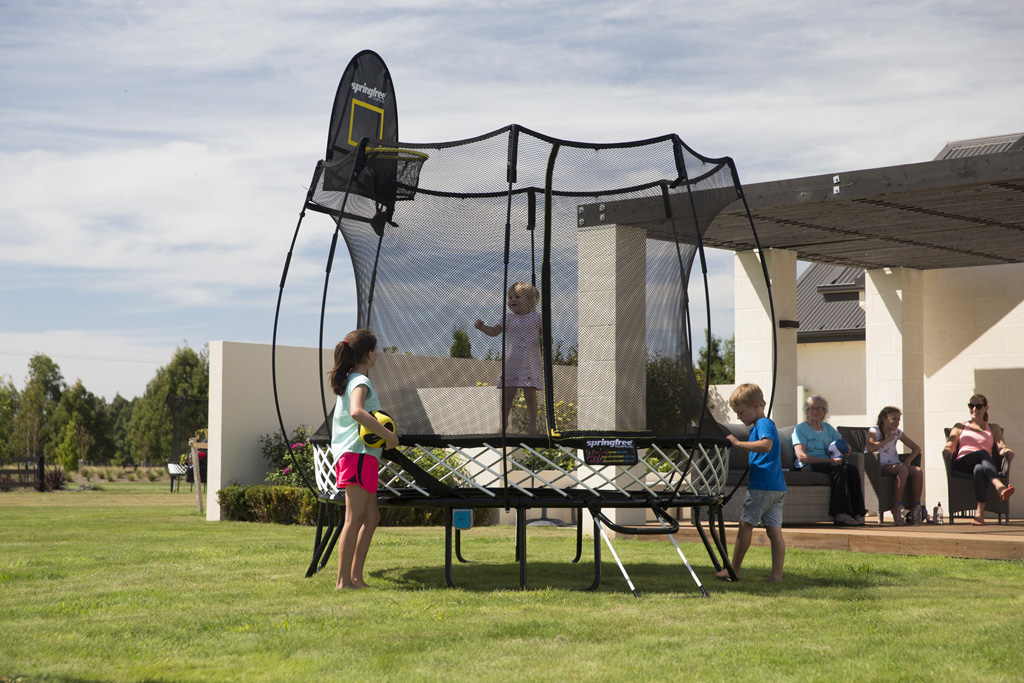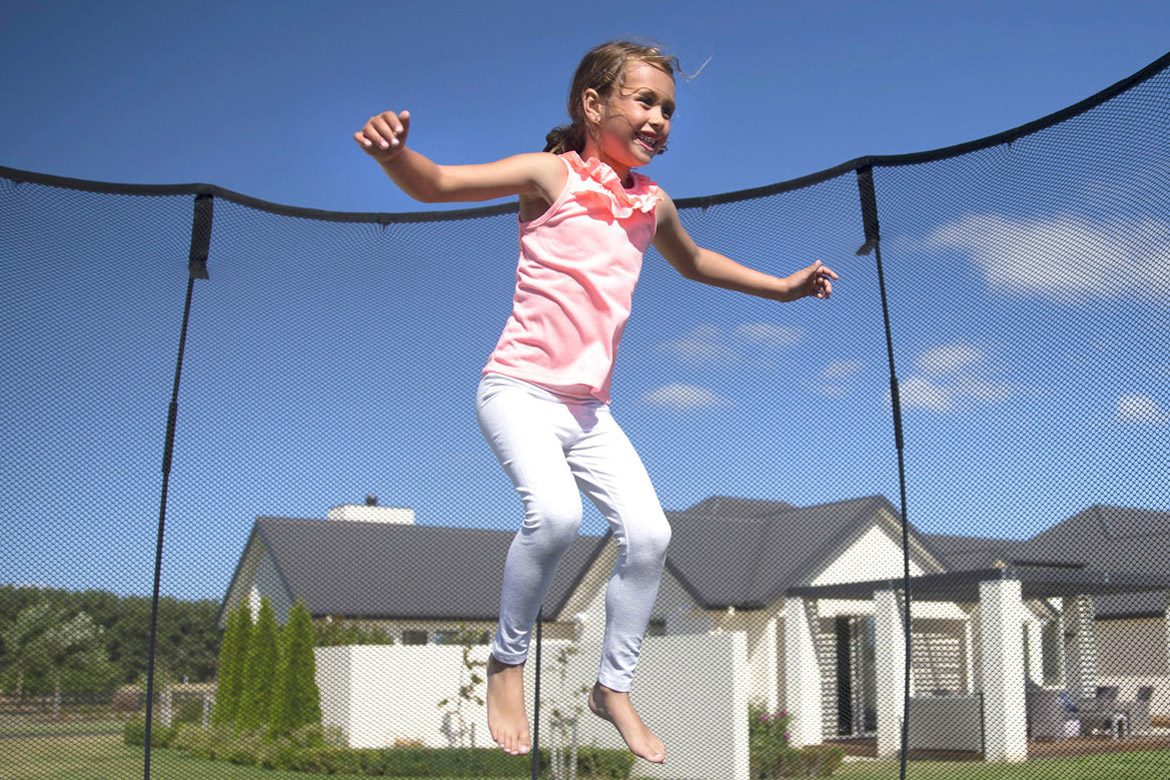Imagine this. Put a child on a mat suspended a metre off the ground. The mat is held by rows of metal springs with gaps between them and surrounded by a metal pipe. The mat’s job is to throw the child in random directions and the child’s job is to keep balance.
Sound like a recipe for trouble?
You don’t need much imagination to recognise the humble backyard trampoline we grew up with.
But it is bizarre isn’t it – our job as parents is to provide opportunities for children to explore and experience the world in a way that develops their physical and mental wellbeing (which trampolines are fantastic for doing) – yet most trampolines are the same old design from the 1930s.
When kiwi dad, Keith Alexander, wanted to get a trampoline for his daughter, his wife, Faith, told him “No way, they’re way too dangerous”. He did the research, and found she was right.
Even in a small country like New Zealand, almost 12,000 trampoline injury claims were received by ACC last year. 1,000 trampoline injury claims a month, and that’s just the ones resulting in hospitalisation or a doctor visit; injuries that don’t end up in ER aren’t included in that number.
And even if you’re in the camp that believes broken bones and stitches are all part of growing up, the financial cost to the NZ taxpayer is $4 million a year from ACC trampoline injuries.
So, yes, Faith was right. And being a Professor of Engineering at Canterbury University, Dr Keith saw a challenge to be solved – he set about designing a safer trampoline. After 15 years in development his Springfree Trampoline redefined the trampoline.












